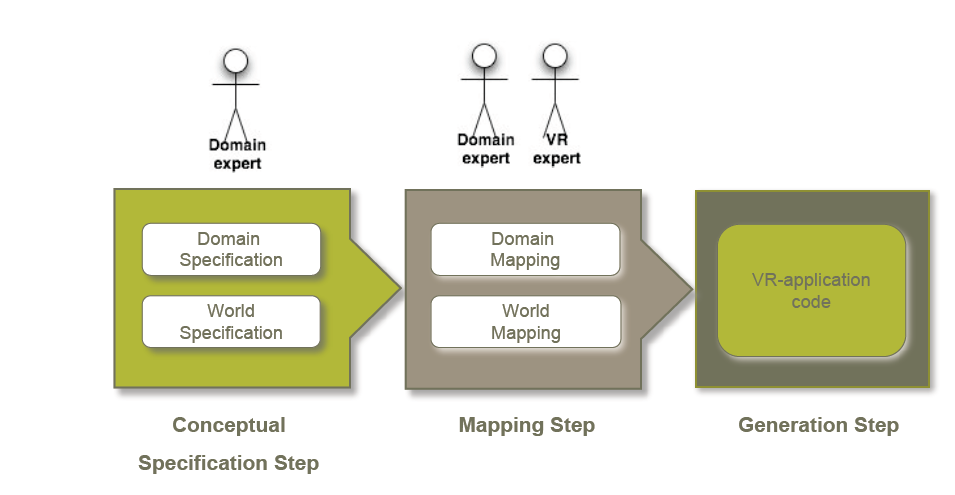VR-WISE: A Conceptual Modelling Approach For Virtual Environments
Virtual environments are computer-hosted visual environments that create the effect of an interactive three-dimensional world in which objects have a sense of spatial and physical presence and can be manipulated by the user as such. The simulated world of a virtual environment however does not necessarily have to obey natural laws of behavior. This evidently means that nearly every area of human intellectual endeavor is a potential candidate for a virtual environment. Example applications range from education applications (e.g. virtual science laboratories, virtual planetariums) over medical applications (remote operation) to entertainment (games, media)
Due to the fast evolution of web technology, more powerful hardware and increasing bandwidth for Internet users, ‘Virtual Web Environments’ are nowadays feasible.
However, little design methodologies are available to develop Virtual web environments Most of the research in the area of virtual reality happens in its deployment technology: hardware (dedicated computers, head mounted displays, gloves, etc.), visualisation algorithms and techniques; languages for interactive 3D applications (VRML, X3D, Java 3D, etc.); tools for building 3D environments, browser extensions and plugins for 3D; etc. The virtual environment itself is usually designed in an ad hoc way; in fact little or no guidelines or methods are available for this. In addition, it is clear that designing and specifying a virtual environment is a complex and time-consuming task. Therefore, the research group WISE investigated how the design and specification of Virtual (Web) Environments can be done in a systematic way and how it can be supported by design methodologies and tools.
Below the general VR-WISE approach is illustrated:

Related Publications
Status: Finished

